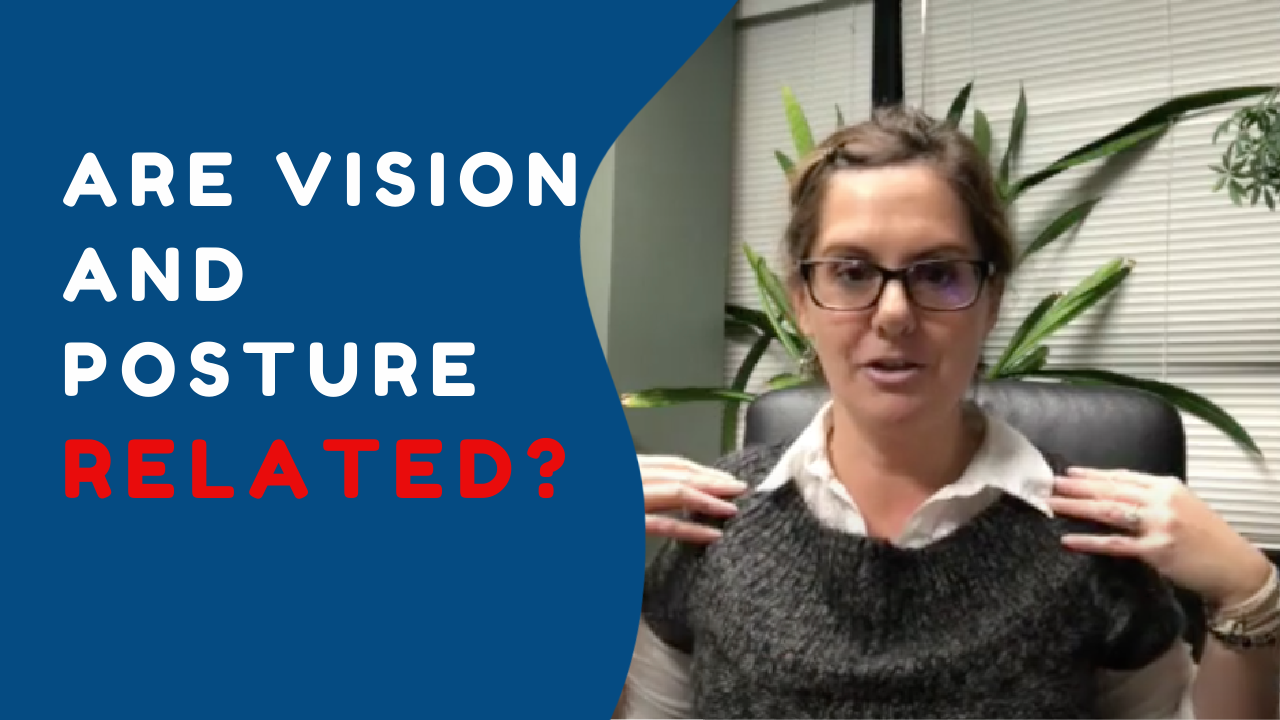Did you know there is a correlation between poor posture and poor vision? Read on to learn more or you can check out our video.
Not only can poor posture contribute to health issues over time, such as reduced circulation and shallow breathing, but it can also affect vision. In some individuals, the opposite may be true. Poor vision contributes to postural imbalances, which then also cause more serious health issues. For those of us who spend hours in front of a computer each day, it’s important to understand the connection between your posture and your vision, and, most importantly, how to prevent future strain to both.
How Poor Vision Can Affect Posture.
Individuals with poor vision may lean forward when reading, working on the computer and doing close work. When you lean forward and squint to try and focus on what you are doing, this causes your body to move into an unnatural position. Many of us also spend more time on devices like our smart phones and tablets, adapting to a “forward head posture.” Ideal posture is when we have our ears above our shoulders when walking and sitting, but increased screen time has caused most of us to tilt our heads forward instead. Having good eye teaming (when your eyes work well together) makes activities like working on a computer or at a desk more comfortable because you aren’t leaning in to see better. If objects seem blurry the farther they are away, it can impact good posture because you end up looking closer to see better. This common vision condition is called Myopia.
Myopia defined.
If you are unable to see objects clearly and feel the need to lean forward when working or to read, you may have Myopia (nearsightedness). Myopia can develop in childhood and progress into adulthood if not treated properly. A family history nearsightedness or visual stress from working, like using a computer, can be a contributing risk factor. Developing Myopia as an adult is likely caused by many hours of close work due to a career (IT, education, science industries) and also may be related to eye focusing or eye coordination problems.
Symptoms in Children.
Children may not be aware they are not seeing as well as they should be. As many schools are remote learning and are home, take notice if your child is leaning forward when working on school assignments or having a Zoom call. Do you notice they are squinting and leaning forward? Some other indications of a vision problem in addition to poor posture may include:
- Poor hand/eye coordination
- Frequent tilting of head to see or read
- Squinting
- Frequent headaches
- Short attention span
Vision For Life can help!
Vision problems can only be properly examined and diagnosed when the individual undergoes a complete functional and developmental evaluation at Vision For Life. There are ways to practice good visual hygiene that includes reading with good posture, in good lighting, while also taking short breaks on a regular basis when doing any close activity. The 20-20-20 rule is also very helpful: for every 20 minutes of screen time, take a 20 second break, looking at an object at least 20 feet from you.
Eye focusing and eye coordination problems could be contributing to decreased visual function and poor posture. Vision For Life can offer a personalized vision therapy that can reduce the progression and severity of nearsightedness, improving vision and helping to create good visual habits that will last a lifetime. Want to learn more or schedule an appointment with us? Call us at (618) 288-1489 or find us online at https://visionforlifeworks.com/.
